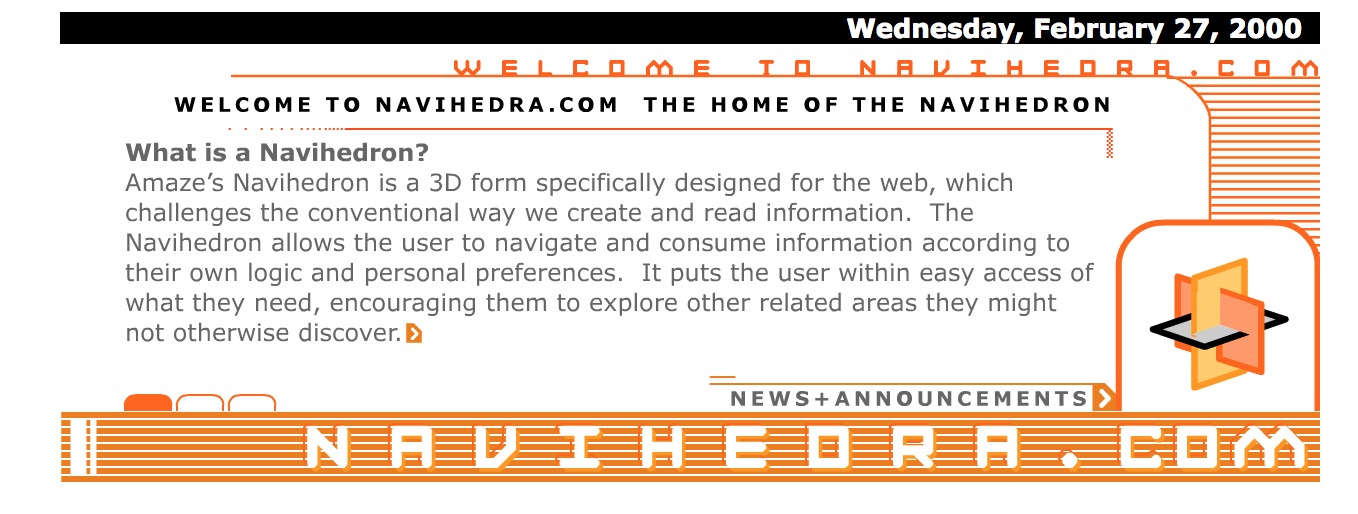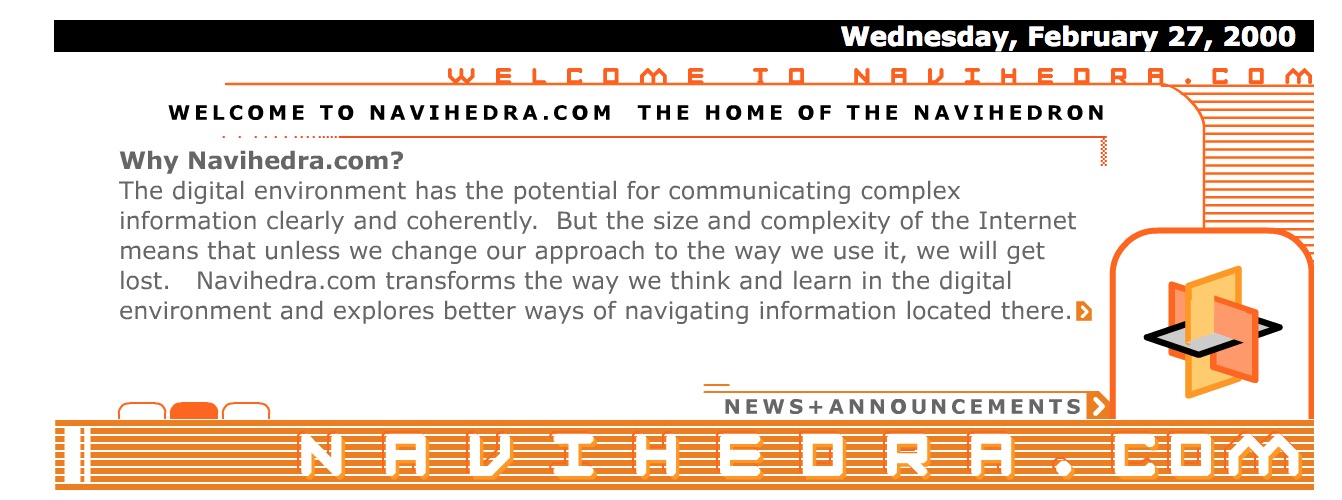To help us get better comprehension of the structure of an argument, we can also call forth a schematic or graphical display
I might be getting ahead of what's to come, since I am annotating as I am reading, but this gets me thinking about some visualization approaches I saw in the 1990s by the brilliant and forgotten Roy Stringer working on what he called "Navihedra" - while they were often seen as navigational, his ideas seemed to be rooted in better representations of the kinds of structures Engelbart is telling us
In brief, however, Navihedra are 3D models based on Platonic solids and relationships between pieces of information are articulated in terms of the spatial relationships represented by the vertices of the polyhedron. That is, units of information (of any kind, media, size or complexity) are attached to a specific vertex and bi-directionally hyperlinked to all the immediately adjacent vertices. The overall structure being determined by some perceived relevance reflected in proximity. Proximate vertices are understood to locate units of information/argument that are more closely related to one another than units of information that are not directly hyperlinked. Furthermore, this 3 dimensional arrangement can be rotated in space so that differing patterns of inter-relatedness can be viewed. Creating such an arrangement is much more difficult than it might appear and requires an author to consider the structure/presentation of even a simple argument like the one contained in this article with at least as much care as a more conventional presentation.
Sadly these were produced in a media form hardly displayable now (Macromedia Shockwave), remnants are in the Internet Archive.

